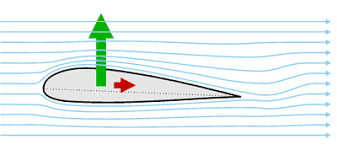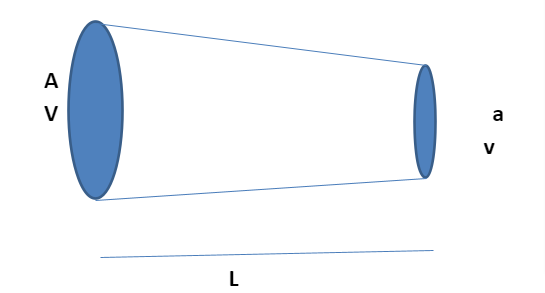Streamline Flow - Properties, Definition, FAQs
Introduction
In this chapter we will study about types of flow, turbulent and laminar flow and define streamline flow. Later on we will study about steady flow and study in depth about Laminar flow with an example. We will also study about Reynolds number and its relation with streamline. In the end we will see the condition for the occurrence of Streamline flow.
JEE Main/NEET 2027: Physics Important Formulas for Class 10
NEET 2025: Mock Test Series | Syllabus | High Scoring Topics | PYQs
JEE Main: Study Materials | High Scoring Topics | Preparation Guide
JEE Main: Syllabus | Sample Papers | Mock Tests | PYQs
- Streamline flow
- Properties of Streamline flow
- Laminar flow and Turbulent Flow
- Definition of Steady Flow
This topic streamline flow, is the subpart of the chapter Fluid Mechanics.
Note: Streamlined meaning in Hindi: सुव्यवस्थित
Streamline flow
If the stream has no turbulence in it, then the stream is said to be in streamline flow or it can be said that at one instant of time the stream never crosses each other as they form a regular pattern.
Experimentally, it has been observed that at any instant in time, the tangent drawn to that point is always in the direction of an instantaneous velocity vector.
Streamline flow is more likely for liquids with high viscosity and low density.
Also read -
- NCERT Solutions for Class 11 Physics
- NCERT Solutions for Class 12 Physics
- NCERT Solutions for All Subjects
Properties of Streamline flow
- Since the flow is such that it can be assumed that the whole system of flow is isolated from its surroundings. Hence there is no interaction with its surroundings and thus we can apply conservation law in case of streamline flow. Conservation Law helps in studying change in velocity, pressure between any two points.
Note: For Conservation Law to apply, it must be incompressible fluid.

- Equation of continuity

Let us assume, a section of fluid passes through this pipe in time
Again for lower part, if fluid covers d distance with velocity v then
d =v∆t…………………
Volume is given as (Area × Height)
V=A× v∆t…………………..
Also, we know that
?=m/V
m= ? V, where ? is density, m is unit mass
m= ? A × v∆t………………….
Mass Flux is mass of the fluid passing through section of pipe per unit time, since same fluid passes through the pipe hence mass flux for both lower and upper end of pipe must be equal, hence
m÷ ∆t = (1) AV………………..(1)
similarly for lower portion
m’÷∆t= ?(2)av…………………(2)
Hence , ?(1) AV= ?(2)av…………….(3)
Thus this equation is known as the Equation of Continuity.
Related Topics Link, |
Laminar flow and Turbulent Flow
What is laminar flow?/ laminar flow definition
Laminar Flow or Streamline flow is the flow in which all particles of fluid flow parallel to the cross sectional area of the fluid and never cross each
other. Mixing or diffusion is not significant in this kind of flow
Laminar Flow Examples
- A smooth flow of viscous (incompressible) liquid flowing through the tube.
- Flow of air across the wings of the plane.
Turbulent Flow/Define turbulent flow.
Turbulent Flow, as the name describes, has got no notion of flowing as there was in Laminar Flow. In turbulent flow of the fluid, rapid variation of Pressure and Velocity happens randomly across the cross sectional area of the pipe
Turbulent Flow Examples in Daily Life
- Flow of fluid in the pipe or tube having radius comparatively very small.
- Flow of stream across river.
Also Read:
- NCERT Solutions for Class 11 Physics Chapter 12 Thermodynamics
- NCERT Exemplar Class 11 Physics Solutions Chapter 12 Thermodynamics
- NCERT notes Class 11 Physics Chapter 12 Thermodynamics
Definition of Steady Flow
A fluid is said to have steady flow, which is not a function of time. Generally Laminar flow is considered to be Steady Flow. It depends on the frame of reference for a fluid to be Steady flow.
Difference between Steady and Unsteady Flow
- While Steady Flow is independent of time, Unsteady flow is dependent on time, generally Turbulent flow is considered to be Unsteady flow.
Reynolds Number of Streamline Flow
Reynolds number is a very important dimensionless quantity in Fluid Mechanics, which is used to predict the nature of flow of fluid. With respect to turbulent and laminar flow
- Laminar flow takes place at low Reynolds numbers in which viscous forces are superior.
- At high Renolds number, turbulent flow takes place which is controlled by inertial forces.
According to the theory, inertial force divided by the viscous force gives Renolds number.
OR
Re=μ L /v
Where, μ= Flow Speed
L=Linear Dimension
v=viscosity
Also check-
- NCERT Exemplar Class 11th Physics Solutions
- NCERT Exemplar Class 12th Physics Solutions
- NCERT Exemplar Solutions for All Subjects
NCERT Physics Notes:
Frequently Asked Questions (FAQs)
As we have studied, in Turbulent Flow fluid doesn’t move parallel to the walls of the tube and also it does not flow in a steady manner, so velocity and pressure keeps changing as it is time dependent. The answer is that we can’t determine its velocity at any point to be fixed.
Reynolds number is a dimensionless quantity in the fluid mechanics used to predict the nature of the flow. Laminar and turbulent flow can be predicted by the value of Reynolds number
Importance :
It correlates the inertia forces to the viscous forces.
Streamline meaning is given as something that can move freely without any bound.
Also Read
02 Jul'25 08:10 PM
02 Jul'25 08:10 PM
02 Jul'25 07:49 PM
02 Jul'25 06:35 PM
02 Jul'25 06:29 PM
02 Jul'25 06:29 PM
02 Jul'25 06:29 PM
02 Jul'25 06:29 PM
02 Jul'25 06:29 PM
02 Jul'25 06:28 PM


